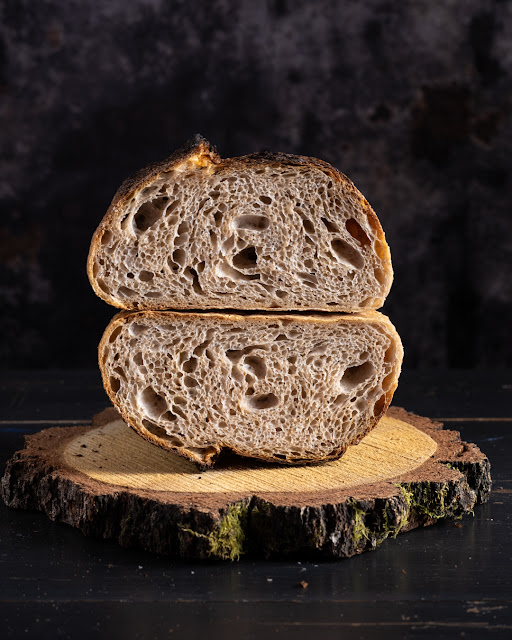Baked doughnuts with discarded sourdough
Baked doughnuts (version 3)
This is a version of dough where the rising agent is the baking powder. There is nothing wrong with baking powder, I do many cakes based on baking powder. The only thing that I do not like is that after baking, most of these cakes/sweets shrink a bit. It is the case for these doughnuts too.
Making doughnuts with this recipe has a big advantage: it is very quick! The baking takes time but the way I manage is to set an alarm every 3 minutes and 45 seconds and I take out the doughnuts and scoop another batch. During the baking, I do plenty of other things, like cleaning the kitchen or putting dishes on the cupboard so I do not waste too much time.
I like this version better than the ones I baked and published on my blog so far. (see Baked doughnuts and Baked doughnuts (version 2) )
There is however a version that I never tried before and tempts me so much.... wait for my next post.
Sourdough kougelhopf
I've also had a quest in perfecting recipes based on baking powder but I found a few disadvantages that almost made me give up.
The first is the fact that all rely on the chemical reaction in the oven. There is no way to guess its behaviour in the oven only by looking at the dough before. Will it rise enough? Will it crack? Will it be soft inside? With sourdough, the dough is already well-risen when the dough is put into the oven and this gives a good prediction about what you'll gonna get.
The second thing that I do not like is that the baking powder-based cakes deflate slightly when taken out from the oven. This never happens visibly when the dough is based on sourdough.
There are disadvantages to baking with sourdough too: it takes time and you may get it sour! Unlike bread dough, where you need to perform a series of steps, this dough is mixed, let to rest for 30 minutes, and then left alone to rise overnight in a warm place. The used starter is not a liquid one but a stiff one. Although you can quickly transform a liquid starter into a stiff starter in only one step this is not enough. There is a reason why pasta made is used for sweet dough: it reduces acidity. Pasta made has its own preparation steps in order to get it right for the dough and this actually takes one day: start with a sourdough bath, to reduce the acids, then feed it 3 times at shorter intervals (kept at warm temperature) to get it very active.
This was my first trial to get it properly done (in line with the indications) and I did my best to align. The ph of the starter I did not get it right during the feeds, I'll need to tinker with some methods/temperatures to get it perfect next time.
Analysing the cake, here are my thoughts: the rise was good but I believe there is a place for better; the taste was interesting and nice but I detected a bit of sourness that shouldn't be there. The cause is still related to the power of the starter to rise the dough and temperature.
If you want to know the original recipe, I invite you to check the book "Coffret Traité de boulangerie au levain" by Thomas Teffri-Chambelland. I have the French version but I understood there is an English version too. Please note that this book is not for beginners... it's about the science of baking and there are a few recipes presented too. But if you are a sourdough geek, I can only recommend this book(s). No hidden publicity here, just my honest opinion as a homemaker with a passion.
I will test more recipes with sweet sourdough in the future although clearly not as often as I'll do for bread. For this recipe, I'd make a few more adjustments to make it perfect but I have to tell you that my kids loved it as such. Here is the recipe:
Whole Spelt Sourdough
I need to confess that I have a love-and-hate relationship with open-crumb sourdough bread. While I am super excited when I cut it and see these lovely big alveoli and feel proud that I managed to catch the fermentation just at the right moment, my excitement goes lower when I agree with my daughter saying "mommy, there are too many big holes in this slice for the butter to stay!" To this practicality issue, no argument that "it is the best fermented bread" and that "I mastered the process" does not stay up.
fold set 2 and 3. But I resisted, thinking... scientific measurement might be more precise than my eye. Even more, after shaping I kept the loaves in bannetons until reached the 4.2 level and just after, I put them in the fridge.




















